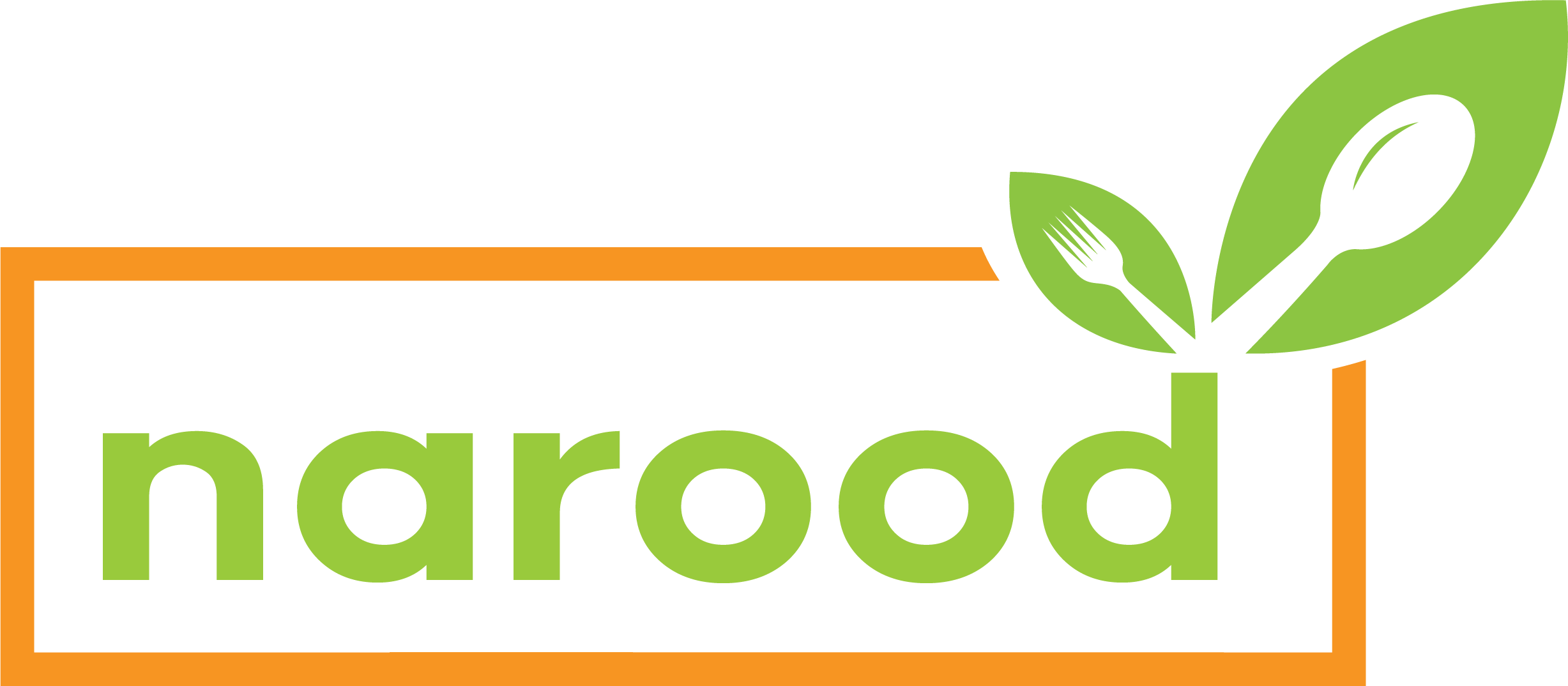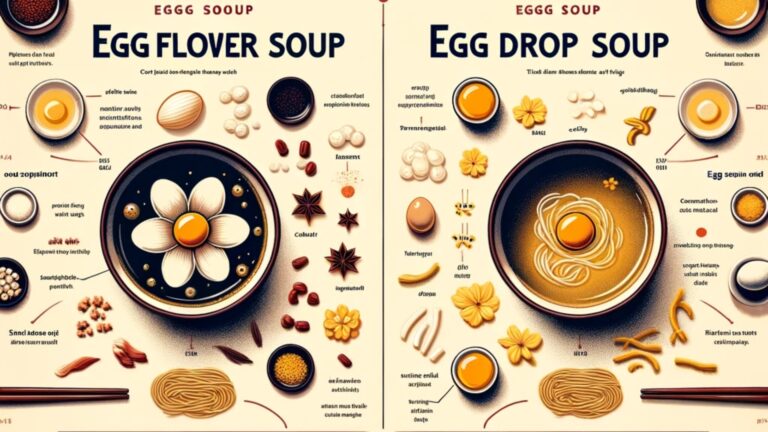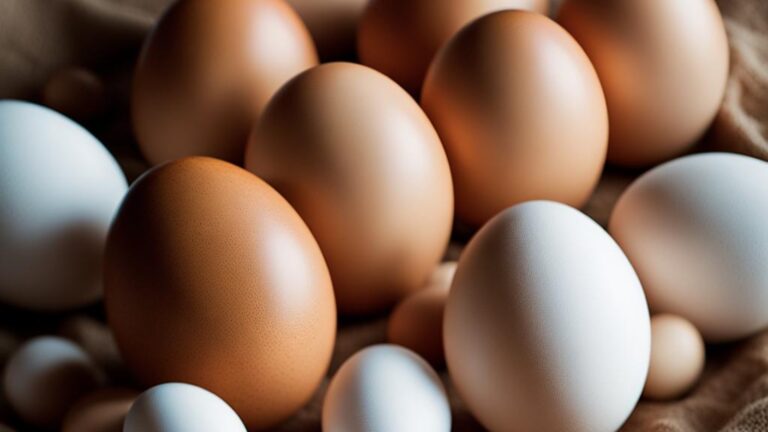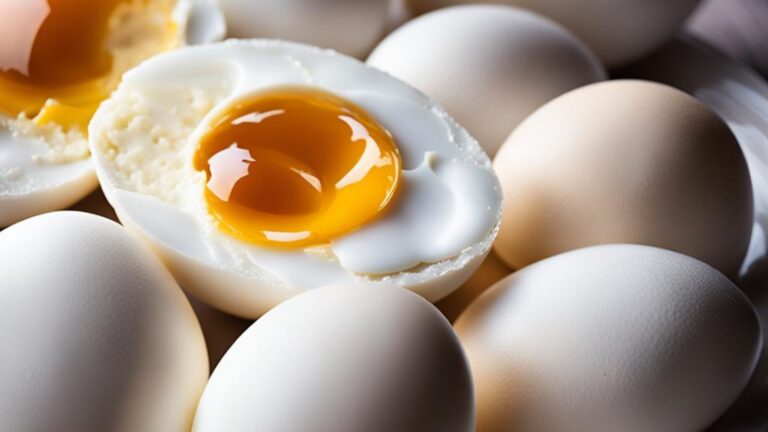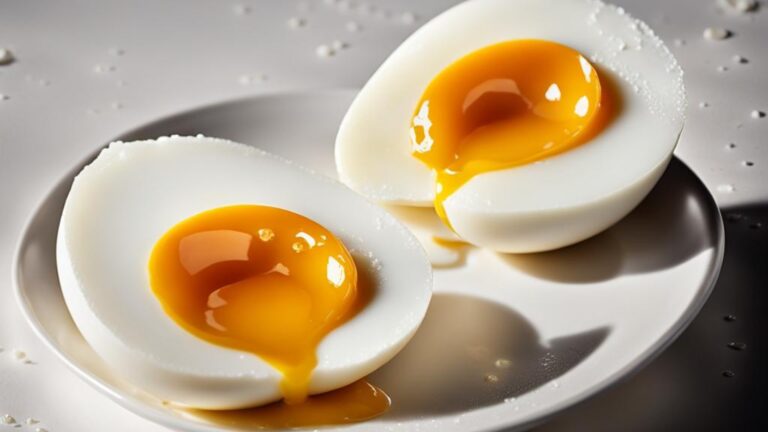
Fried eggs and scrambled eggs are both popular breakfast options. Fried eggs are cooked sunny-side up or over easy, while scrambled eggs are beaten and cooked until fluffy. The choice between them ultimately comes down to personal preference and desired texture.
There are numerous ways to prepare eggs; two of the most popular methods are frying and scrambling. Fried and scrambled eggs have unique characteristics, flavors, and textures.
In this article, we will dive into the differences between these two delicious breakfast options and explore the various ways to cook and enjoy them.
Fried Egg vs. Scrambled Egg: An Overview
Here’s a comparison table highlighting the main differences between fried eggs and scrambled eggs:
| Characteristic | Fried Egg | Scrambled Egg |
| Cooking Method | Cooked whole in a pan with oil or butter until the whites are set and the yolk can be boiled to various degrees of doneness. | Cooked whole in a pan with oil or butter until the whites are set and the yolk can be cooked to various degrees of doneness. |
| Appearance | Eggs are beaten and then cooked in a pan with or without additional ingredients like milk or cheese, resulting in curds of boiled egg. | Appear as curds or small pieces of cooked egg, often uniform in color |
| Texture | Has a contrast in texture between the firm whites and runny or semi-runny yolk | Uniform, slightly fluffy texture throughout |
| Ingredients | No mixing or beating is required | Eggs, and optionally milk, salt, and additional ingredients like cheese or vegetables |
| Cooking Time | Faster cooking time; usually just a few minutes per side for sunny-side-up, longer for over-easy | Slightly longer cooking time as you gently stir and cook the beaten eggs |
| Mixing/Beating | Typically, no additional ingredients | Eggs are beaten to incorporate air and create a uniform mixture |
| Additional Ingredients | Typically features a whole egg with a sunny-side-up or over-easy presentation. | Can include various ingredients like milk, cheese, herbs, vegetables, or meats |
| Flip or Stir | Typically, no flipping or stirring is required | Requires gentle stirring to create curds and even cooking |
| Presentation | Maintains the classic round shape of the egg | Served as a pile of cooked egg curds |
| Customization | Limited customization, primarily in yolk doneness | Highly customizable with added ingredients and flavors |
| Variations | Sunny-side-up, over-easy, over-medium, over-hard, etc. | Numerous variations with different ingredient combinations |
| Serving Style | Often served as a standalone dish or as a topping for other dishes | Usually served as a standalone dish, often on a plate or in a bowl |

Differences Between Fried Egg and Scrambled Egg
Here, I have arranged everything about the fried and scrambled eggs. You will find the discussion section by section.
All About Fried Egg
Fried eggs are a classic breakfast staple that many people enjoy. Cooking a fried egg involves cracking it into a hot pan with oil or butter and cooking until the desired doneness is achieved.
The most common way to cook a fried egg is sunny-side-up, where the egg is cooked on one side only, and the yolk remains runny. However, depending on your preference, you can cook a fried egg over-easy, over-medium, or over-hard.
Benefits of Fried Eggs
Fried eggs have a rich and savory flavor with a crispy bottom and a creamy yolk. The runny yolk adds a luxurious and velvety texture that perfectly pairs with toast or crispy bacon.
Additionally, fried eggs can be easily seasoned with salt, pepper, herbs, or spices to enhance their taste.
Methods to Fry an Egg
There are several methods to fry an egg, each yielding a slightly different result. Here are a few popular methods:
- Traditional Fried Egg: To cook a fried egg, heat a non-stick pan over medium heat and add a small amount of oil or butter. Crack the egg into the pan and cook undisturbed until the whites are set but the yolk is still runny. Season with salt and pepper and serve.
- Basted Fried Egg: A basted fried egg is achieved by adding a small amount of water to the pan after cracking the egg. Cover the pan with a lid and let the steam cook the top of the egg. This method results in a well-cooked white with a runny yolk.
All About Scrambled Egg
Scrambled eggs offer a different experience altogether. Instead of cooking the egg whole, scrambled eggs involve whisking the eggs and then cooking them until they form soft, creamy curds.
This method creates a fluffy and light texture that is loved by many.
Advantages of Scrambled Eggs
Scrambled eggs have a creamy and delicate texture that melts in your mouth. Since the eggs are mixed and cooked gently, they remain moist and tender. Scrambled eggs can be customized to suit your taste by adding cheese, vegetables, herbs, or meats.
Methods to Make Scrambled Eggs
Various methods exist to make scrambled eggs, each with its technique and outcome. Here are two popular methods:
- Classic Scrambled Eggs: To make classic scrambled eggs, crack the desired number of eggs into a bowl and whisk them until the yolks and whites are well combined. Heat a non-stick pan over medium-low heat and melt a knob of butter. Pour the beaten eggs into the pan and let them cook slowly. Gently stir the eggs with a spatula to create soft curds. Once the eggs are cooked but still slightly runny, remove them from the heat, as they will continue to cook from residual heat.
- Creamy Scrambled Eggs: For extra creamy scrambled eggs, add a touch of cream or milk to the beaten eggs before cooking. This will make the eggs even more luscious and velvety. Follow the same method as the classic scrambled eggs, ensuring they are cooked over low heat and continuously stirred for a creamy consistency.
Frequently Asked Questions
What is the Difference Between a Fried Egg and a Scrambled Egg?
A fried egg is cooked by cracking it into a hot pan and leaving it to cook without stirring. A scrambled egg is made by whisking and cooking it while continuously stirring it in the pan.
Which is Healthier, a Fried Egg or a Scrambled Egg?
Both fried and scrambled eggs can be healthy options. However, frying an egg typically requires more oil or butter, which adds extra calories, while scrambled eggs can be cooked with minimal fat. The healthiness depends on the cooking method and added ingredients.
How Long Does it Take to Cook a Fried Egg?
Cooking a fried egg usually takes 2 to 4 minutes, depending on how runny or well-done you want the yolk. It is essential to cook the egg until the white is fully set to avoid any risk of foodborne illness.
Can I Add Cheese or Vegetables to a Fried Egg or Scrambled Egg?
You can add cheese or vegetables to fried and scrambled eggs. Sprinkle cheese or mix in vegetables while the egg cooks or before whisking it for scrambled eggs.
How Do I Make a Perfect Scrambled Egg?
To make a perfectly scrambled egg, crack the eggs into a bowl, whisk them until the yolks and whites are fully combined, and then pour the mixture into a non-stick pan over low heat. Continuously stir the eggs until they reach your desired consistency.
Are Fried Eggs High in Cholesterol?
Eggs, in general, are a good source of cholesterol. However, the cholesterol in eggs does not significantly impact blood cholesterol levels for most people. It is recommended to consume eggs in moderation as part of a balanced diet.
Can I Use Vegetable Oil Instead of Butter to Fry an Egg?
Yes, you can use vegetable or cooking oil instead of butter to fry an egg. Heat the oil in the pan and fry the egg as usual.
Can I Reheat a Fried or Scrambled Egg?
It is generally not recommended to reheat a fried or scrambled egg as it can affect the texture and taste. Additionally, reheating eggs may increase the risk of bacterial growth. It is best to cook eggs fresh and consume them immediately.
Can I Freeze Fried or Scrambled Eggs?
Although it is possible to freeze fried or scrambled eggs, the texture and taste may suffer after thawing. If you need to freeze eggs, it is better to freeze them raw and cook them after thawing for better results.
Can I Make Fried or Scrambled Eggs Ahead of Time?
While it is possible to make fried or scrambled eggs ahead of time, they are best enjoyed fresh. If you need to prepare eggs in advance, it is recommended to slightly undercook them and reheat them just before serving to maintain the best quality.
Conclusion
As you can see, fried and scrambled eggs offer distinct tastes, textures, and cooking methods. Whether you prefer the crispy edges and runny yolk of a perfectly fried egg or the fluffy and creamy curds of scrambled eggs, both options are delicious and versatile.
Experiment with different cooking techniques, seasonings, and additional ingredients to enjoy these breakfast classics. Whichever method you choose, be sure to savor the simple pleasure of a well-cooked egg to start your day off right.
